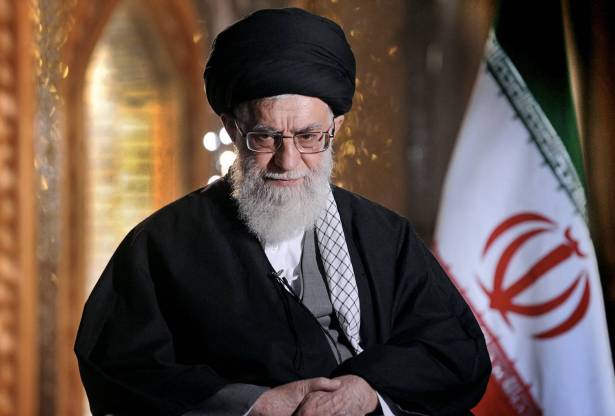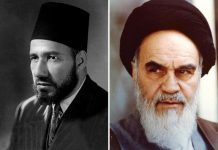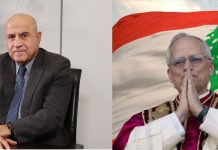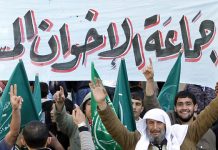هل ستغتال إسرائيل المرشد الأعلى لإيران خامنئي؟
سالم الكتبي/جيروزاليم بوست/23 تشرين الأول/2024
Will Israel assassinate Iran’s Supreme Leader Khamenei? – opinion
Salem Alketbi/Jerusalem Post/October 23/2024
The idea of assassinating the supreme leader may recede slightly in favor of more vital targets. These could include Iran’s nuclear and missile program facilities.
The image of Israeli assassination targets recently shown on Israel’s Channel 14 and picked up by the BBC featured several figures allegedly wanted by Israel but did not include the Islamic Republic of Iran’s Supreme Leader Ali Khamenei. Those listed included Iraqi Shi’ite cleric Ali Al Sistani, Hamas leader Yahya Sinwar (killed by the IDF last week), Hezbollah Deputy Secretary-General Naim Qassem, Yemeni Houthi leader Abdul-Malik Al Houthi, and Quds Force commander Esmail Qaani.
However, recent strikes and intelligence breaches targeting Iranian security institutions and their affiliated proxies, particularly Hezbollah in Lebanon, make the scenario of assassinating Khamenei highly plausible. This possibility is compelling Iranian security agencies to exercise extreme caution. The situation is especially critical given the collapse of the tacitly agreed-upon rules of engagement and conflict boundaries between Iran and Israel. Several factors place Khamenei within the scope of potential Israeli targets, even if his name was absent from the publicized “assassination list.”
Indeed, this very omission could be considered an indicator of purposeful misdirection and deception. Such tactics are highly likely in these circumstances.
A list that included Sistani
FIRST, THE list was not limited to military leaders of the Iranian Revolutionary Guard Corps (IRGC) and Iranian proxies. It also included Sistani, a Shi’ite religious authority of stature. This is noteworthy because Sistani does not carry the same weight as Khamenei in managing the conflict with Israel.
He also lacks the authority to direct Iran-aligned proxies to participate in the so-called “axis of resistance.” While Sistani’s political and ideological views are akin to those of Khamenei, he lacks authority over the militant Iraqi Shi’ite organizations. These groups receive orders directly from the IRGC. It can be said that Sistani’s relationship with these groups is limited to the spiritual aspect, particularly in terms of Shi’ite unity from Iran to Lebanon and beyond. Sistani’s statements about the ongoing conflict between Hezbollah and Israel in Lebanon follow the Iranian political line; however, they focus on providing aid and emphasizing the necessity of helping the Lebanese face this crisis.
He also issued an emotionally charged statement mourning Hassan Nasrallah, describing him as the “great martyr.” His sons held a three-day mourning period for Nasrallah in Najaf and Karbala, the two holiest cities in Iraq for Shi’ites. Sistani strongly endorses the “support” operations carried out by Iranian-backed proxies against Israel which contributes in great measure to the alignment of pro-Iran Shi’ite organizations and their execution of missile strikes against Israel.
Here, we can point to Sistani’s role in mobilizing Iraqi Shi’ite power during the confrontation with ISIS by issuing his famous Sufficiency Jihad fatwa in 2016 and rallying all factions under the banner of what is known as Iraq’s Shi’ite Popular Mobilization Forces. However, Sistani does not appear directly in the conflictual relationship between Iran and Israel. This conflict involves dimensions that go beyond religious issues and include struggles for hegemony and strategic influence amid the increasing clash between the Iranian expansionist project and Israel’s desire to ensure its security and stability.
With Sistani capable of mobilizing most, though not all of the Iraqi Shi’ite front, it stands to reason that Israel might be considering adding Khamenei himself to the assassination list.
The political and security costs would involve only slight differences in both cases. Both are major Shi’ite leaders, and the expected Shi’ite anger in the event of the assassination of either would be comparable. It might even be greater in Sistani’s case, given the factor of power struggle within the circle close to the Iranian supreme leader.
Khamenei enters the circle of Israel’s potential targets
SECOND, THE current geopolitical climate – which Israel considers unique – pushes Khamenei into the circle of potential Israeli targets. This is true in terms of the successive victories Israel is achieving in weakening Iran’s power and its regional proxies; it is also applicable to the current international and regional support for Israeli military operations to neutralize the Iranian threat.
It is evident that the succession and escalation of Israeli assassination operations against prominent Iranian leaders or Iran loyalists has not resulted in any significant cost to Israel; the reaction of the Islamic Republic did not exceed verbal threats and the firing of antiquated missiles – which were intercepted by Israel and its allies – to satisfy the psychological needs of the pro-Iranian public.
These minimal consequences will encourage Israel to target Iran’s top leaders, including Khamenei himself. It turns out Israel’s successive and escalating assassinations of prominent Iranian or pro-Iranian leaders have not, as of now, resulted in a cost that would compel the Israeli security establishment to discontinue of these bold operations, even if they hit the head of the Iranian regime.
What are the strategic assessments?
THIRD, THERE are strategic assessments that view the scenario of targeting Khamenei as potentially the least costly and most impactful. This scenario would have implications for disrupting the calculations of Iranian regime leaders and igniting conflict within the narrow circle of power. It could also create the conditions to spark popular unrest among those already primed to challenge the regime. This is being fueled by deteriorating economic and security conditions and the country’s preoccupation with ongoing external confrontations and conflicts. The scenario of the assassination of Khamenei has become a genuine Iranian concern. It is no longer dismissed by the security apparatus there, especially after the series of targeted attacks by Israel against Nasrallah – and reportedly against Hamas leader Ismail Haniyeh. Doubts and unanswered questions surrounding the death of Iranian president Ebrahim Raisi, when his helicopter crashed in May, have also contributed to this concern.
This explains reports confirming the rush to move the Islamic Republic’s Supreme Leader to a secure location after receiving news of Nasrallah’s assassination. The depth of Israeli intelligence penetration of IRGC security agencies and its proxies has become apparent. This makes the possibility of reaching the head of the Iranian power hierarchy a real concern for many, especially for the leaders of the IRGC. The decisive factor in all of the above hinges on the assessment by Israeli decision-makers of the cost-benefit analysis being conducted during this period, which aims to maximize Israel’s strategic gains from the turbulent regional scene. In my opinion, the idea of assassinating the supreme leader may recede slightly in favor of more vital targets. These could include Iran’s nuclear and missile program facilities. This depends on Israel’s operational capability to carry out an effective strike against these facilities without the risk of facing a second strike. It also depends on the IRGC’s capability to retaliate against the potential Israeli attack. In this case, the scenario seems open to all possibilities, including all-out war. Subjecting Iranian nuclear and missile capabilities to a failed or limited-impact strike could compel the IRGC to use all available offensive capabilities against Israel. They might do so without restraint or political calculations.
*The writer is a UAE political analyst and former Federal National Council candidate.
https://www.jpost.com/opinion/article-825719
هل ستغتال إسرائيل المرشد الأعلى لإيران خامنئي؟
سالم الكتبي/جيروزاليم بوست/23 تشرين الأول/2024
(ترجمة من الإنكليزية بواسطة موقعي المنسقية وغوغل)
فكرة اغتيال المرشد الأعلى قد تتراجع قليلاً لصالح أهداف أكثر أهمية، مثل منشآت البرنامج النووي والصاروخي الإيراني.
الصورة التي أظهرتها قناة 14 الإسرائيلية والتي تناولتها الـBBC مؤخراً، عرضت عدة شخصيات يُزعم أن إسرائيل تستهدفهم، لكن لم تشمل المرشد الأعلى للجمهورية الإسلامية الإيرانية علي خامنئي. تضمنت القائمة المذكورة شخصيات مثل رجل الدين الشيعي العراقي علي السيستاني، وقائد حماس يحيى السنوار (الذي قتله الجيش الإسرائيلي الأسبوع الماضي)، ونائب الأمين العام لحزب الله نعيم قاسم، وزعيم الحوثيين في اليمن عبد الملك الحوثي، وقائد فيلق القدس إسماعيل قآني.
لكن الضربات الأخيرة واختراقات المخابرات التي استهدفت مؤسسات الأمن الإيرانية ووكلاءها، خاصة حزب الله في لبنان، تجعل سيناريو اغتيال خامنئي محتملاً جداً. هذا الاحتمال يجبر أجهزة الأمن الإيرانية على اتخاذ احتياطات شديدة. الوضع أصبح أكثر خطورة بعد انهيار القواعد الضمنية للصراع بين إيران وإسرائيل. هناك عدة عوامل تجعل خامنئي ضمن الأهداف المحتملة لإسرائيل، حتى لو لم يكن اسمه مدرجًا في “قائمة الاغتيالات” المُعلنة. في الواقع، يمكن اعتبار هذا الاستبعاد مؤشراً على التمويه والخداع المقصود، وهذه التكتيكات غالبًا ما تُستخدم في مثل هذه الظروف.
قائمة تضمنت السيستاني
أولاً، القائمة لم تقتصر على القادة العسكريين للحرس الثوري الإيراني أو وكلاء إيران. بل شملت السيستاني، وهو سلطة دينية شيعية بارزة. هذا مهم لأن السيستاني لا يحمل نفس الثقل في إدارة الصراع مع إسرائيل مثل خامنئي. كما أنه لا يملك السلطة لتوجيه الوكلاء الموالين لإيران للمشاركة في ما يسمى “محور المقاومة”. بينما تتشابه آراء السيستاني السياسية والإيديولوجية مع خامنئي، إلا أنه يفتقر إلى السلطة على الجماعات العراقية الشيعية المسلحة. هذه الجماعات تتلقى أوامرها مباشرة من الحرس الثوري الإيراني. يمكن القول إن علاقة السيستاني بهذه الجماعات تقتصر على الجانب الروحي، وخاصة من حيث وحدة الشيعة من إيران إلى لبنان وما بعدها. تصريحات السيستاني حول الصراع المستمر بين حزب الله وإسرائيل في لبنان تتبع الخط السياسي الإيراني، لكنها تركز على تقديم المساعدات والتأكيد على ضرورة مساعدة اللبنانيين في مواجهة هذه الأزمة. كما أصدر بياناً مؤثراً نعى فيه حسن نصر الله، واصفاً إياه بـ”الشهيد العظيم”. أبناؤه أقاموا فترة حداد لمدة ثلاثة أيام على نصر الله في النجف وكربلاء، وهما المدينتان الأكثر قداسة للشيعة في العراق. السيستاني يدعم بقوة العمليات التي تنفذها الوكلاء المدعومون من إيران ضد إسرائيل، وهو ما يساهم بشكل كبير في انسجام الجماعات الشيعية المؤيدة لإيران وتنفيذها لضربات صاروخية ضد إسرائيل.هنا يمكننا الإشارة إلى دور السيستاني في تعبئة القوة الشيعية العراقية خلال المواجهة مع داعش، بإصداره فتوى الجهاد الكفائي في عام 2016 وجمعه كل الفصائل تحت راية ما يُعرف بقوات الحشد الشعبي الشيعية العراقية. لكن السيستاني لا يظهر بشكل مباشر في العلاقة الصراعية بين إيران وإسرائيل. هذا الصراع يتجاوز القضايا الدينية ليشمل صراعاً على الهيمنة والتأثير الاستراتيجي وسط زيادة المواجهة بين المشروع التوسعي الإيراني ورغبة إسرائيل في ضمان أمنها واستقرارها.بما أن السيستاني قادر على تعبئة معظم، وإن لم يكن كل، الجبهة الشيعية العراقية، فمن المنطقي أن إسرائيل قد تفكر في إضافة خامنئي نفسه إلى قائمة الاغتيالات.
خامئني يدخل دائرة الأهداف المحتملة لإسرائيل
ثانياً، المناخ الجيوسياسي الحالي – الذي تعتبره إسرائيل فريداً – يدفع خامنئي إلى دائرة الأهداف الإسرائيلية المحتملة. هذا صحيح من حيث الانتصارات المتتالية التي تحققها إسرائيل في إضعاف قوة إيران ووكلائها الإقليميين؛ وهو ينطبق أيضًا على الدعم الدولي والإقليمي الحالي للعمليات العسكرية الإسرائيلية لتحييد التهديد الإيراني. من الواضح أن تصاعد وتيرة عمليات الاغتيال الإسرائيلية ضد القادة الإيرانيين البارزين أو الموالين لإيران لم يترتب عليه أي تكلفة كبيرة على إسرائيل؛ رد فعل الجمهورية الإسلامية لم يتعدَ التهديدات الكلامية وإطلاق الصواريخ القديمة – التي اعترضتها إسرائيل وحلفاؤها – لإرضاء الرأي العام المؤيد لإيران. هذه النتائج القليلة ستشجع إسرائيل على استهداف القادة الإيرانيين الكبار، بما في ذلك خامنئي نفسه. يتضح أن الاغتيالات المتتالية والمتزايدة للقادة الإيرانيين أو الموالين لإيران لم تسفر، حتى الآن، عن تكلفة تدفع المؤسسة الأمنية الإسرائيلية إلى وقف هذه العمليات الجريئة، حتى لو استهدفت رأس النظام الإيراني.
ما هي التقييمات الاستراتيجية؟
ثالثاً، هناك تقييمات استراتيجية تعتبر سيناريو استهداف خامنئي الأقل تكلفة والأكثر تأثيراً. هذا السيناريو ستكون له تداعيات على حسابات قادة النظام الإيراني وإشعال الصراع داخل الدائرة الضيقة للسلطة. كما يمكن أن يخلق ظروفًا لاندلاع اضطرابات شعبية بين أولئك المستعدين بالفعل لمعارضة النظام. هذه الفكرة تُغذّى من الظروف الاقتصادية والأمنية المتدهورة وانشغال البلاد بالصراعات المستمرة. سيناريو اغتيال خامنئي أصبح مصدر قلق حقيقي في إيران. لم يعد يتم تجاهله من قبل الأجهزة الأمنية هناك، خاصة بعد سلسلة الهجمات الإسرائيلية التي استهدفت نصر الله – والتي قيل إنها استهدفت أيضاً زعيم حماس إسماعيل هنية. الشكوك والأسئلة التي لم تتم الإجابة عليها حول وفاة الرئيس الإيراني إبراهيم رئيسي، عندما تحطمت مروحيته في مايو، أسهمت أيضاً في هذا القلق. هذا يفسر التقارير التي تؤكد الإسراع في نقل المرشد الأعلى للجمهورية الإسلامية إلى مكان آمن بعد تلقيه خبر اغتيال نصر الله. أصبح اختراق المخابرات الإسرائيلية لأجهزة الأمن التابعة للحرس الثوري الإيراني ووكلائه واضحًا. هذا يجعل احتمال الوصول إلى رأس الهرم في السلطة الإيرانية مصدر قلق حقيقي لكثيرين، وخاصة لقادة الحرس الثوري الإيراني. العامل الحاسم في كل ما سبق يعتمد على تقييم صناع القرار الإسرائيليين لتحليل التكلفة والفائدة الجاري خلال هذه الفترة، والذي يهدف إلى تحقيق أكبر المكاسب الاستراتيجية لإسرائيل من المشهد الإقليمي المتوتر. في رأيي، قد تتراجع فكرة اغتيال المرشد الأعلى قليلاً لصالح أهداف أكثر أهمية، مثل منشآت البرنامج النووي والصاروخي الإيراني. يعتمد هذا على قدرة إسرائيل على تنفيذ ضربة فعالة ضد هذه المنشآت دون خطر التعرض لضربة ثانية. كما يعتمد على قدرة الحرس الثوري الإيراني على الرد على الهجوم الإسرائيلي المحتمل. في هذه الحالة، يبدو أن السيناريو مفتوح على كل الاحتمالات، بما في ذلك الحرب الشاملة. فإخضاع القدرات النووية والصاروخية الإيرانية لضربة فاشلة أو محدودة التأثير قد يدفع الحرس الثوري إلى استخدام كل قدراته الهجومية المتاحة ضد إسرائيل، بدون قيود أو حسابات سياسية.
**الكاتب هو محلل سياسي من الإمارات العربية المتحدة ومرشح سابق للمجلس الوطني الاتحادي.






















